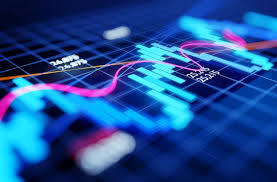How to choose between ETF and ETF-linked?

The biggest advantage of ETFs is that they combine both OTC and OTC trading, but they also have a major flaw, that is, the threshold is too high whether you are buying or redeeming OTC, and in order to bypass this high threshold, you have to apply for a stock account and then operate on the OTC.
However, some people may not have such a large amount of capital to apply for redemptions over the counter, nor do they want to open an account, so the two ways to invest in ETFs seem to be blocked.
I. What is ETF-linked fund?
It is also an index fund that will invest the vast majority (typically no less than 90%) of the fund's assets in a target ETF that will track the corresponding index by investing in the target ETF.
2.Is there a double fee for the ETF Connected Fund?
After reading the introduction of ETF linkage, some may think of FOF, ETF linkage and FOF are both investment funds of funds, the difference is that FOF invests in a basket of funds, while ETF linkage invests in one fund.
As we all know, one of the less dominant aspects of FOFs is that, there will be a double charge, not only will the investor have to pay the FOF's Management and custodial fees, as well as the fees associated with the other funds in which the FOF invests. So will there be double charges for ETF linkage as well?
Cut to the chase: it won't.
Because this one fund, in which ETF Link invests, is the fund company's own fund, and according to the regulations, the assets of the FOF fund are invested in the There are no duplicate charges for management or custody fees for the portion of the own fund. Therefore, ETF Connections will not be charged duplicate fund-related fees either.
3.Is the income of ETF-linked funds inferior to ETFs?
According to the regulations, feeder funds must have a 5% cash position to cope with redemptions, but ETF does not have this requirement, so the maximum position of feeder funds may not exceed 95%, but ETF can achieve nearly full operation, so there will be some differences in performance between the two.
But that doesn't mean that ETFs are necessarily inferior to ETFs in terms of earnings performance. positions are relatively low, and in a unilateral upward market, ETFs are more likely to have a lower return than ETFs. It may be true that an ETF link may not be able to rise as quickly as an ETF that follows the index as closely, but on the other hand, if it is in a down market This extra bit of tracking error, however, may allow ETF-linked to outperform the index and ETFs.
4.ETFs or ETF-linked?
After reading this, one might be tempted to say, why pick a feeder fund that doesn't earn as much as an ETF? In fact, our intention with this issue is not to trumpet how all-powerful and perfect ETF connectivity is, but rather to get people excited about ETFs. Linkage has a deeper understanding. Let's talk some more about whether you should choose ETFs or ETF linkage.
First of all, ETFs and ETF linkages do not always occur in pairs.
Some ETFs do not have corresponding feeder funds, and fund companies will usually consider all factors to decide whether to issue corresponding ETFs. Federated funds. Therefore, in the absence of a corresponding feeder fund, you can only choose ETFs.
Secondly, if you want to operate for a short period of time to take advantage of periodic investment opportunities, it is more appropriate to choose ETFs.
Because the fees of ETFs are lower, which is mainly reflected in the fact that if investors are trading on the floor, the fees are only commissions. Whereas ETF linkage requires a redemption fee, especially the redemption fee portion, if held for a short period of time, such as less than seven days, it will generally A punitive redemption fee of 1.5% is charged, so short-term operation of feeder funds is relatively less cost-effective.
Of course, there are distinctions within feeder funds as to whether they are suitable for long-term or short-term investments: many fund companies now offer feeder funds with a Two types of shares will be issued, A and C. A shares will have a redemption fee and C shares will not have a subscription fee, but will have a redemption fee and approximately annual 0.2% to 0.4%, per diem sales service fee, so that, in comparison, the A shares in the feeder fund are more appropriate Long-term investments, C share more suitable for short-term investments
Third, if you want to make a fixed investment, then ETF linkage is more advantageous.
If you want to make long-term fixed investment and can set up automatic deductions, ETF connection can be realized.
In addition, if ETFs are operated in the field, general banks and third-party sales organizations are unable to operate them, and they must be operated after opening an account with a brokerage company.
Summary
ETF-linked funds, which allow tracking of the corresponding indexes by investing in ETFs, are available to the average investor Since the ETFs in which the ETFs are linked are the fund company's own ETFs, they do not have a low barrier to entry. There will be no double charging. There will be some error in the performance of the ETF link because the position cannot be filled, but overall the difference is generally small. And because the position is slightly lower, ETFs are also more dominant in controlling withdrawals. If one has to choose between ETF-linked and ETFs, it mainly depends on the investor's investment needs, and long-term, fixed-vesting investors For investors who are looking for an ETF link, or who do not have a stock account, the ETF link is more suitable. It's easier to trade ETFs on the floor.



